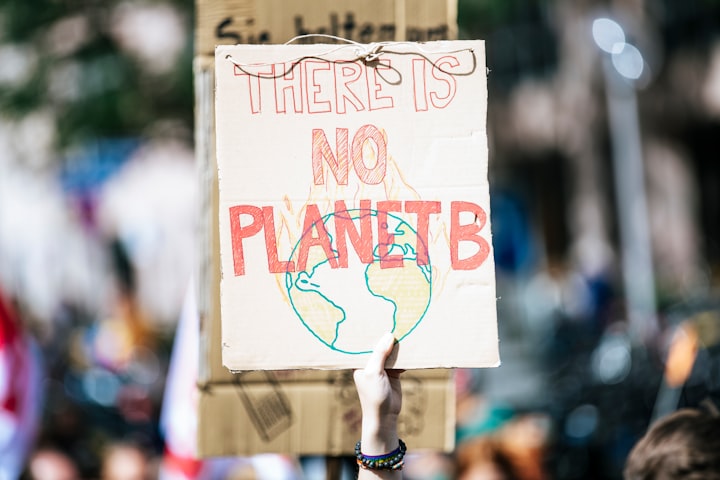Eco-design: Integrating Sustainability from Product Conception
Eco-design emphasizes sustainable practices from a product's inception, ensuring minimal environmental impact throughout its lifecycle. It's the future of responsible manufacturing

In an era where sustainability is no longer a choice but a necessity, the concept of eco-design has emerged as a game-changer. By integrating environmental considerations right from the product's conception, eco-design ensures that sustainability is not an afterthought but a foundational principle. Let's delve into the significance of eco-design and its far-reaching impacts on a product's lifecycle.
1. What is Eco-design?
Eco-design, also known as environmentally conscious design, involves creating products with minimal environmental impact. This approach considers every stage of a product's lifecycle, from raw material extraction to end-of-life disposal, ensuring that each phase is as sustainable as possible.
2. The Importance of Starting Early:
- Proactive vs. Reactive: Addressing environmental concerns at the design phase is proactive, preventing potential issues rather than trying to fix them later.
- Cost-Efficiency: Making sustainable choices early on can lead to cost savings in the long run by reducing waste, energy consumption, and potential redesigns.
- Innovation Driver: Eco-design challenges creators to think outside the box, often leading to innovative solutions and unique product features.
3. Influencing the Entire Lifecycle:
- Material Selection: Opting for recycled, biodegradable, or sustainably sourced materials reduces the product's environmental footprint from the outset.
- Manufacturing Process: Designing for efficient manufacturing can minimize waste, energy use, and emissions.
- Distribution: Compact or lightweight design can lead to reduced transportation emissions and costs.
- Usage: Products designed for energy efficiency, durability, or reduced resource consumption can have significantly lower environmental impacts during their use phase.
- End-of-Life: Designing for recyclability, biodegradability, or upcycling ensures that the product's life doesn't end in a landfill.
4. Real-world Examples of Eco-design:
Companies like Nokia have revolutionized the smartphone industry with products like the G22, designed for longevity and repairability. This approach reduces the need for frequent replacements and curtails electronic waste. On the other hand, brands like Fairphone have not only focused on repairability but also on sourcing ethical and conflict-free materials for their devices. Meanwhile, companies like Ecover have embraced biodegradable materials for their packaging, ensuring that their products return to the earth harmlessly once their functional life is over.
Case Study: Nokia's DIY Repairable Budget Android Phone
In a world where electronic waste is a growing concern, Nokia's recent launch of the G22, a DIY repairable budget Android phone, serves as a prime example of eco-design in action.
- Design for Longevity: By allowing users to easily replace components like the battery, screen, and charging port, Nokia is promoting the longevity of the device. This reduces the need for frequent replacements, thereby decreasing electronic waste.
- Collaboration with iFixit: Nokia's collaboration with iFixit, a company known for its repair guides and advocacy for the right to repair, ensures that users have access to genuine parts and step-by-step guides. This empowers consumers to take charge of their device's lifespan.
- Use of Recycled Materials: The G22's design, which incorporates recycled plastic, is a testament to Nokia's commitment to sustainability right from the product's conception.
- Affordability and Accessibility: While other companies like Fairphone have ventured into the realm of repairable devices, Nokia's offering stands out due to its affordability. This makes sustainable choices more accessible to a broader audience.
- Local Manufacturing: Nokia's decision to manufacture 5G devices in Europe to reduce the carbon footprint of locally sold devices further underscores their commitment to sustainability.
In essence, the Nokia G22 exemplifies how companies can integrate sustainability from the very conception of a product. By designing with repairability and longevity in mind, Nokia not only caters to the growing consumer demand for durable devices but also takes a significant step towards reducing electronic waste and promoting a circular economy.
5. The Broader Impacts of Eco-design:
- Consumer Perception: In a market where consumers are increasingly eco-conscious, eco-designed products can offer a competitive edge.
- Regulatory Compliance: Many regions are implementing stricter environmental regulations. Eco-design can help companies stay ahead of the curve and avoid potential penalties.
- Environmental Conservation: At its core, eco-design contributes to the broader goal of conserving our planet's resources and ecosystems.
6. Challenges and the Way Forward:
While the benefits of eco-design are clear, it's not without challenges. It requires interdisciplinary collaboration, extensive research, and sometimes, upfront costs. However, with the mounting environmental crises and shifting consumer preferences, the transition to eco-design is not just beneficial but imperative.
Conclusion:
Eco-design represents a paradigm shift in how we approach product creation. By prioritizing the environment from the very beginning, we can ensure that sustainability is woven into the very fabric of our products. As we move forward, eco-design will not just be a niche approach but the standard for all product development.




Comments ()